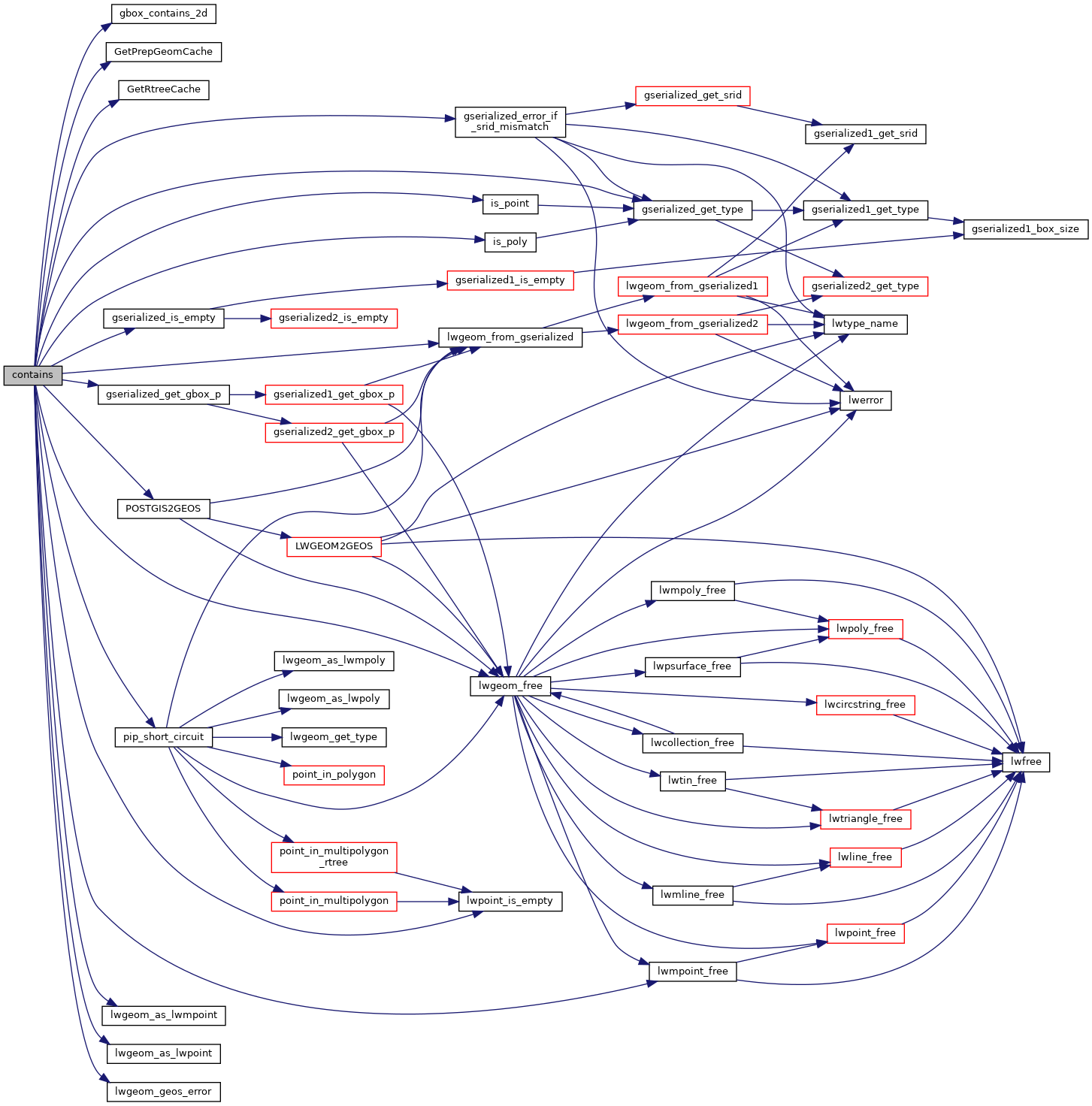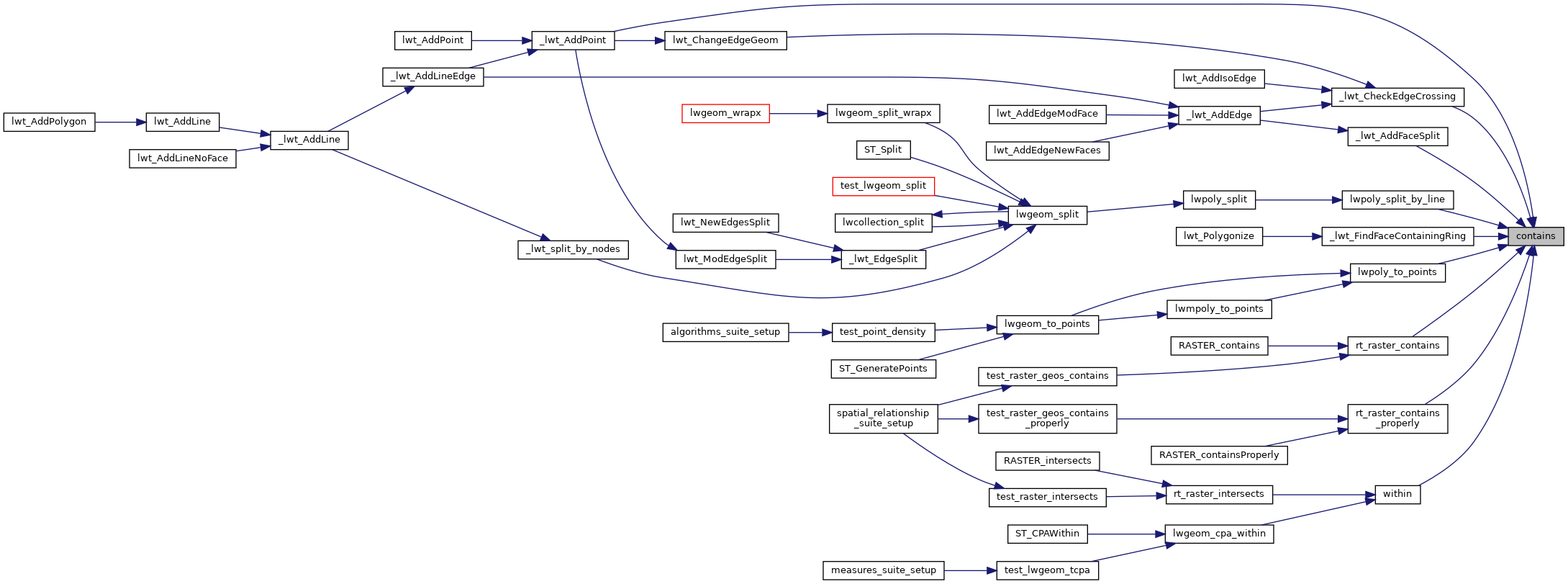1775 SHARED_GSERIALIZED *shared_geom1 = ToastCacheGetGeometry(fcinfo, 0);
1776 SHARED_GSERIALIZED *shared_geom2 = ToastCacheGetGeometry(fcinfo, 1);
1777 const GSERIALIZED *geom1 = shared_gserialized_get(shared_geom1);
1778 const GSERIALIZED *geom2 = shared_gserialized_get(shared_geom2);
1780 GEOSGeometry *g1, *g2;
1787 PG_RETURN_BOOL(
false);
1789 POSTGIS_DEBUG(3,
"contains called.");
1799 PG_RETURN_BOOL(
false);
1808 SHARED_GSERIALIZED *shared_gpoly =
is_poly(geom1) ? shared_geom1 : shared_geom2;
1809 SHARED_GSERIALIZED *shared_gpoint =
is_point(geom1) ? shared_geom1 : shared_geom2;
1810 const GSERIALIZED *gpoly = shared_gserialized_get(shared_gpoly);
1811 const GSERIALIZED *gpoint = shared_gserialized_get(shared_gpoint);
1815 POSTGIS_DEBUG(3,
"Point in Polygon test requested...short-circuiting.");
1822 retval = (pip_result == 1);
1827 int found_completely_inside =
LW_FALSE;
1830 for (uint32_t i = 0; i < mpoint->
ngeoms; i++)
1841 if (pip_result == 1)
1842 found_completely_inside =
LW_TRUE;
1844 if (pip_result == -1)
1851 retval = retval && found_completely_inside;
1857 elog(ERROR,
"Type isn't point or multipoint!");
1858 PG_RETURN_BOOL(
false);
1878 POSTGIS_DEBUG(4,
"containsPrepared: cache is live, running preparedcontains");
1880 GEOSGeom_destroy(g1);
1885 if (!g1)
HANDLE_GEOS_ERROR(
"First argument geometry could not be converted to GEOS");
1890 GEOSGeom_destroy(g1);
1892 POSTGIS_DEBUG(4,
"containsPrepared: cache is not ready, running standard contains");
1893 result = GEOSContains( g1, g2);
1894 GEOSGeom_destroy(g1);
1895 GEOSGeom_destroy(g2);
1900 PG_RETURN_BOOL(
result > 0);
char result[OUT_DOUBLE_BUFFER_SIZE]
int gbox_contains_2d(const GBOX *g1, const GBOX *g2)
Return LW_TRUE if the first GBOX contains the second on the 2d plane, LW_FALSE otherwise.
void gserialized_error_if_srid_mismatch(const GSERIALIZED *g1, const GSERIALIZED *g2, const char *funcname)
int gserialized_get_gbox_p(const GSERIALIZED *g, GBOX *gbox)
Read the box from the GSERIALIZED or calculate it if necessary.
LWGEOM * lwgeom_from_gserialized(const GSERIALIZED *g)
Allocate a new LWGEOM from a GSERIALIZED.
int gserialized_is_empty(const GSERIALIZED *g)
Check if a GSERIALIZED is empty without deserializing first.
uint32_t gserialized_get_type(const GSERIALIZED *g)
Extract the geometry type from the serialized form (it hides in the anonymous data area,...
void lwgeom_geos_error(const char *fmt,...)
void lwmpoint_free(LWMPOINT *mpt)
LWMPOINT * lwgeom_as_lwmpoint(const LWGEOM *lwgeom)
void lwgeom_free(LWGEOM *geom)
#define POINTTYPE
LWTYPE numbers, used internally by PostGIS.
#define LW_TRUE
Return types for functions with status returns.
int lwpoint_is_empty(const LWPOINT *point)
PrepGeomCache * GetPrepGeomCache(FunctionCallInfo fcinfo, SHARED_GSERIALIZED *g1, SHARED_GSERIALIZED *g2)
Given a couple potential geometries and a function call context, return a prepared structure for one ...
RTREE_POLY_CACHE * GetRtreeCache(FunctionCallInfo fcinfo, SHARED_GSERIALIZED *g1)
Checks for a cache hit against the provided geometry and returns a pre-built index structure (RTREE_P...
static LWPOINT * lwgeom_as_lwpoint(const LWGEOM *lwgeom)
#define HANDLE_GEOS_ERROR(label)
static char is_point(const GSERIALIZED *g)
static int pip_short_circuit(RTREE_POLY_CACHE *poly_cache, LWPOINT *point, const GSERIALIZED *gpoly)
static char is_poly(const GSERIALIZED *g)
GEOSGeometry * POSTGIS2GEOS(const GSERIALIZED *pglwgeom)
const GEOSPreparedGeometry * prepared_geom
The tree structure used for fast P-i-P tests by point_in_multipolygon_rtree()

